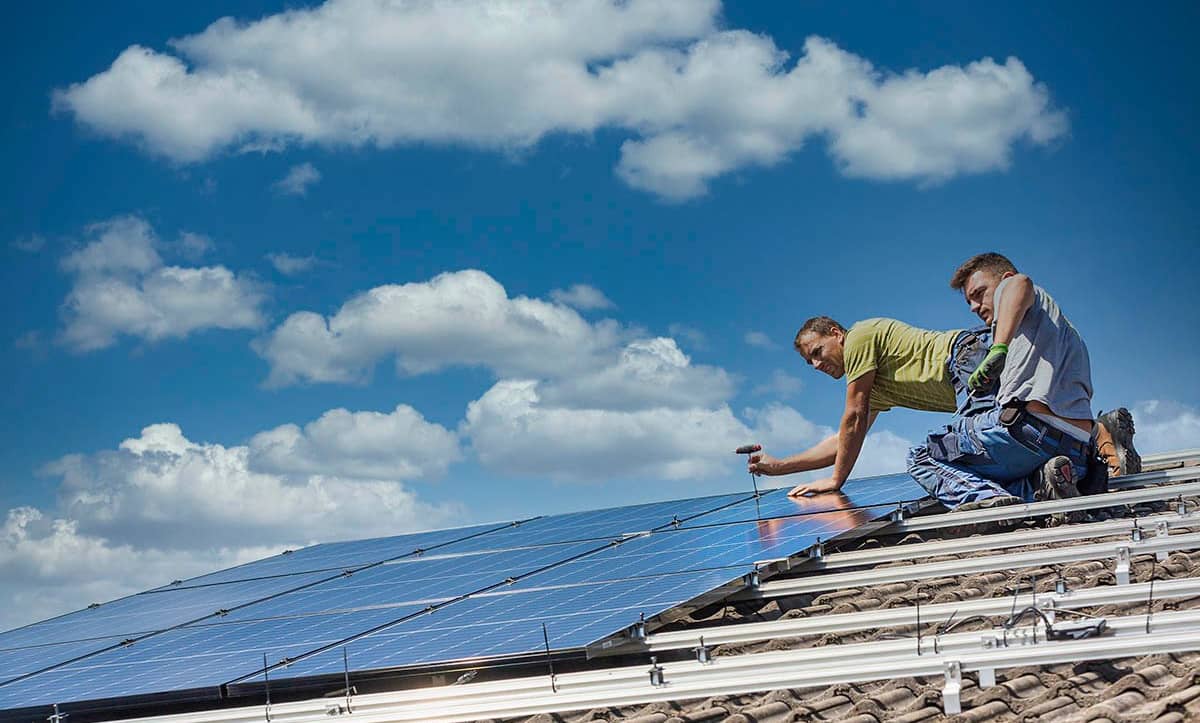What’s Involved in a Solar Panel Detach and Reset? A Complete Guide
When it’s time to replace or repair your roof, and you have solar panels installed, you’ll need a detach and resetservice. This process ensures your panels are safely removed, stored, and reinstalled once the roofing work is complete.
But not all detach and reset jobs are the same. The scope of work, materials needed, and complexity depend on your roof type, solar system design, and whether you’re changing the roofing material.
Here’s a complete breakdown of what’s involved.
1. Initial Inspection and Documentation
Before removal, a certified technician will:
- Inspect the current system
- Document panel layout and wiring
- Photograph and label components for precise reinstallation
- Check for any damaged panels, railings, or wiring
- Seal all existing penetrations from removed mounts to prevent roof leaks during roofing work
- Inspect the system for any pre-existing failures, such as broken microinverters, chewed wiring, or cracked panels
2. Parts Typically Involved
If your system uses traditional rails, many components can be inspected and reused depending on their condition. However, for rail-less systems, it’s generally recommended to replace all mounting components to ensure proper alignment, waterproofing, and performance after reinstallation.
Parts may include:
- Mounting Hardware: Rails, standoffs, and brackets that hold the panels in place
- Flashing & Sealants: Especially important for waterproofing penetrations on new roofing
- Wire Management: Zip ties, conduits, and clips for safety and appearance
- Roof Attachments: L-feet or tile hooks, depending on roof type
- Sealant or Roofing Components: For sealing previous screw holes if layout changes
- Microinverters/Optimizers (if applicable): May be evaluated for condition or replacement
3. Roof Type Considerations
The type of roof you’re coming from and going to makes a big difference in how the system is reinstalled.
Shingle to Shingle
Typically the simplest scenario
Existing mounting hardware may be reusable
New flashing and sealant will still be applied
Shingle to Metal
Requires a different attachment method (e.g. S-5 clamps or direct-to-seam attachments)
Often no roof penetrations are needed on standing seam metal roofs
Layout may need adjustment
Tile to Shingle
New mounting hardware and layout redesign
May require conversion from tile hooks to standard mounts
Easier to reinstall on shingle
Shingle to Tile
More complex and labor-intensive
Often requires specialized tile hooks and elevated rails
New flashing kits designed for tiles
S-Tile to Flat Tile
Minor adjustment to hook positioning and clearance
Flashing may change depending on manufacturer
4. Panel Layout Changes and Upgrades
Some homeowners choose to:
Upgrade the inverter or optimizers
Add battery backup
Reconfigure panel layout to match the new roof
Changes like these may slightly increase project time and cost, but offer long-term benefits.
5. Permits and Utility Coordination
Depending on your city and utility company, you may need:
Re-permitting for system changes
Inspection before turning the system back on
Utility coordination to reconnect to the grid
6. Final Reinstallation and Testing
After the roof is complete:
Panels are reinstalled according to original or revised layout
Wiring is safely reconnected
System is tested and brought back online
7. Homeowner Pre-Job Checklist
Before scheduling your detach and reset, make sure to:
✅ Confirm whether the roof is being repaired, replaced, or changed to a new material
✅ Clarify if the solar system will return to the same layout or be relocated
✅ Provide access to utility disconnects and main electrical panel
✅ Ensure all pets and valuables are secure for rooftop work
✅ Identify if the roofers need the entire system removed, or just the parts above specific areas
✅ If relocating the system, note that all electrical components may need to be removed and reinstalled, not just panels and mounts
✅ Ask for a pre-inspection report to confirm panel condition and system health
Learn more about solar panel maintenance and system lifespans at the U.S. Department of Energy Solar Energy Technologies Office
Need a Certified Team?
At Removal Reinstall Solar Panels, we handle the entire detach and reset process with care and professionalism. Whether you’re switching roof types or just need your system protected during roofing work, we ensure a safe, smooth transition with full system integrity preserved.


